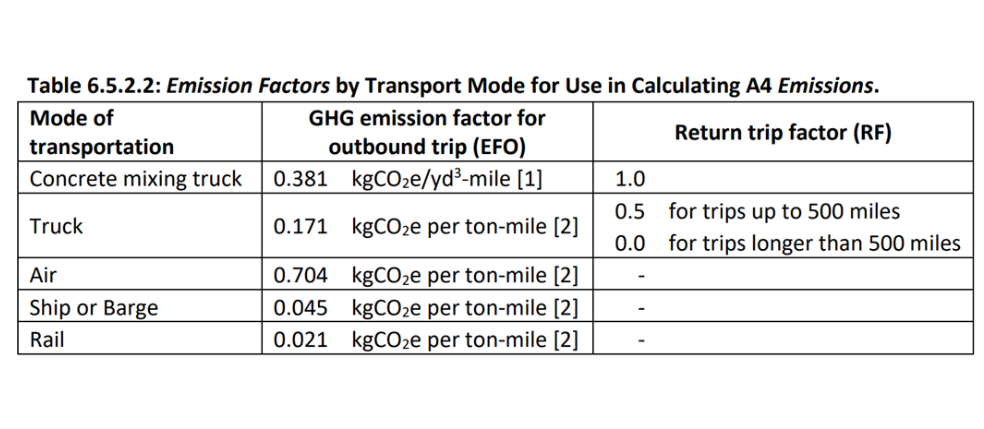Two documents are currently open for public comment that have the ability to transform embodied carbon management in North American buildings.
The first is a Request for Information (RFI) from Canada’s Treasury Board Secretariat to gather information to inform potential requirements around EPDs and embodied carbon caps on steel. The second is a new standard to provide a holistic approach to whole life carbon emissions (operational carbon + embodied carbon) evaluation and reporting in buildings.
RFI related to procurement of low-carbon steel products for Government of Canada building and infrastructure projects. (Solicitation number 24062-23-633)
Public comment period closes March 15, 2024.
“The Treasury Board of Canada Secretariat (TBS) is launching this Request for Information (RFI) to engage industry. This RFI seeks feedback from designers (architects and engineers), steel producers, fabricators & suppliers, EPD and LCA practitioners, general contractors, construction managers and all other interested parties.” (TBS)
Generally, the RFI asks respondents to comment on the current state of steel EPDs and any potential risks and barriers to requiring EPDs and setting embodied carbon caps on steel in construction projects by the Government of Canada. This information will inform potential updates to the Standard in Embodied Carbon in Construction which has been in effect since 2023 and currently only applies to concrete.
ASHRAE and The International Code Council (ICC) Completes Draft Building Whole Life Carbon Emissions Evaluation Standard 240P
Public comment period closes March 18, 2024.
“ASHRAE and the International Code Council (ICC) announced the release of the full publication public review draft of a proposed joint standard for the evaluation and documentation of greenhouse gas (GHG) emissions across a building’s life cycle.
Proposed ASHRAE/ICC Standard 240P – Quantification of Life Cycle Greenhouse Gas Emissions of Buildings is open for comment from February 2, 2024 to March 18, 2024. Drafts are posted and comments can be made at osr.ashrae.org.
Standard 240P will provide a methodology to quantify the embodied and operational GHG emissions associated with buildings and their sites. The standard will also provide minimum requirements for documentation of life cycle GHG emissions.
The standard is intended to support building industry stakeholders, governments and the finance and investment industry in implementing a common platform for measuring, reporting and acting upon the GHG emissions of buildings.
“Standard 240P will play a pivotal role in addressing embodied carbon and significantly impacting the built environment’s greenhouse gas (GHG) emissions, particularly within mechanical, electrical, and plumbing (MEP) systems,” said 2023-24 ASHRAE President Ginger Scoggins, P.E., Fellow ASHRAE. “We are pleased to collaborate with the International Code Council (ICC) on this standard, recognizing the joint effort’s potential to advance effective solutions and contribute to a more sustainable future.” (ASHRAE)
Mantle has highlighted key points of interest in this draft standard below
Proposed Object of Assessment is significantly more extensive than most current LCAs
The required material inventory (“object of assessment”) means what building materials and systems to include in the LCA. 240P proposes to include not just the building structure and envelope (as LEED and the Zero Carbon Standard currently recommend), but also mechanical, electrical, plumbing (MEP), finishes, and sitework. Any other building elements must also be included if they represent >1% of the total project cost or mass. MEP that in aggregate represent less than 5% of total MEP and Services cost or mass may be excluded.
- Mechanical Equipment and their Distribution Systems: ducts and pipes serving mechanical equipment and their insulation, chillers, cooling towers, air handlers, heat pumps, boilers, chilled beams, VRF systems, heat exchangers, and air conditioners.
- Electrical: Light fixtures, power supply and distribution, and power management systems, including batteries, uninterrupted power supplies, switchgears, transformers, and power generation systems.
- Plumbing Equipment Systems: Pipes servicing equipment and fixtures.
- Interiors include partitions, walls, windows, doors, raised floor construction, suspended ceiling construction, wall finishes, interior fabrications, flooring, and ceiling finishes.
- Sitework includes site preparation, clearing, demolition, earthwork, and improvements including roadways, parking lots, pedestrian plays and walkways.
Default service life for most building systems including finishes and MEP can be found in Table A.1, organized by OmniClass Building Elements. These values will contribute to standardized and consistent replacement frequency during the project’s Use phase (B) between projects.
Complete data often isn’t available, and that’s OK
The guidance is split into separate requirements for “as-designed” assessments when full information about the materials and supply chains that will be used are not yet known vs “as-built” assessments when better data can be expected.
Assessments are required to quantify and report on the uncertainty for both material quantities and emissions data (Section 6.4).
Guidance is provided on how to do that, including the following data representativeness evaluation table.

Default transportation emission factors can be found in Table 6.5.2.1 for ‘as-design’ using only the location of manufacture.

For the ‘as-built’ scenario, the specifically tracked delivery route and mode of transportation data should be used to quantify emissions from transportation but if no specific data is provided, Table 6.5.2.2 provides emission factors.

Construction activities (including demolition)
- Demolition of any preexisting structures on the site should be included in the A5 Construction results in a category called “Pre-construction demolition: A5-1”. This should also include GHG emissions from the disposal of those materials. These emissions can be estimated at 35 kg CO2e/m2 of the building being demolished for the ‘as-design’ path. For ‘as-built’, track the actual fuel used for the demolition.
- Construction activities (A5-2) also come with a handy ‘as-designed’ estimate of 40 kg CO2e/m2 of project gross floor area.
Fugitive emissions from refrigerants
Required to be calculated and reported under the relevant life cycle stage in which they occur, often Use (B1).
Table C.2 includes clear GWPs of various refrigerants and estimated installation and annual leakage rates per HVAC equipment type.

Biogenic carbon and carbonation
- Sequestered biogenic carbon may be reported as a removal in the Product life cycle stages (A1-A3) when harvested from sustainably sourced forests. It must be reported as emitted when combusted, decomposed, or degraded at end of life (C3 or C4).
If only upfront embodied carbon (A1-A5) is being reported, this ‘removed’ carbon can be noted as ‘stored’ within the project. Any stored carbon must be reported separately and not combined with fossil emissions.
- Carbonation can also be included and accounted for in the Use (B1) and End-of-Life (C3 or C4) phases. The standard notes that information on carbonation that is found in EPDs can be applied, “provided that the conditions in the scenario selected in the data source coincide with the anticipated project-specific ones, particularly in relation to surface area exposure”. Concrete manufacturers who are developing EPDs may wish to consider including guidance on carbonation to align with this guidance.
Operational carbon emission factors
This post will not dive into 240P’s approach to operational carbon except to note the following:
Table 7.3.2.2(1) is a treasure trove for anyone quantifying the operational carbon of a project and wants to take into account the ongoing decarbonization of the electrical grid. This table provides annual emission factors for every major grid in the US between 2020 and 2050, accounting for the decarbonization planned for each grid.


Please reach out if you’d like to discuss preparing and submitting an official response to either of the above standard’s public commenting portals.

